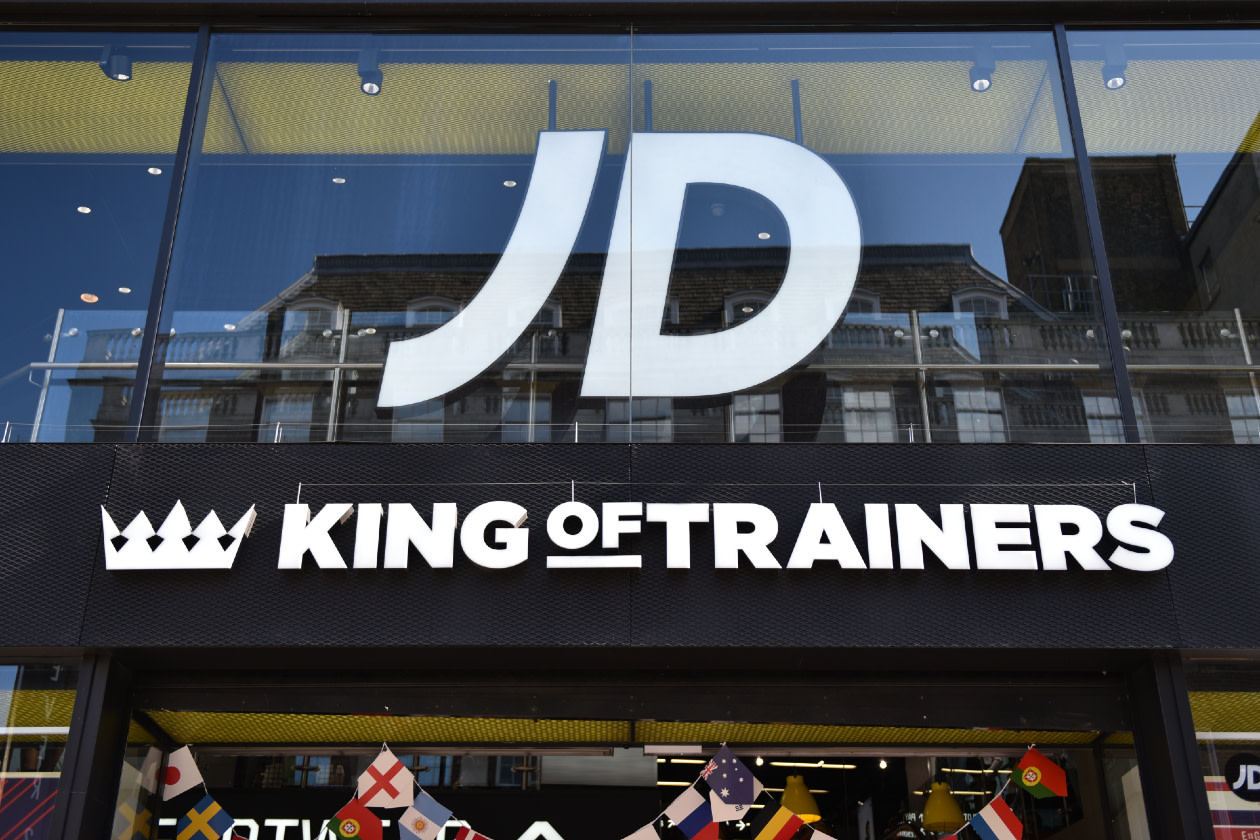JD Sports' full-year sales grew 2.9% to £10.4bn, ignoring the impact of exchange rates, with growth in all regions except the UK & Ireland. Sports fashion benefited from standout performances in Europe and Asia Pacific which were enough to offset weakness in the Outdoor division.
Gross margins ended the year at 48.0%, down 0.2 percentage points from the previous year, driven by higher levels of discounting.
Full-year underlying profit before tax was £912.4mn, in line with previously lowered guidance, but 8.0% down on last year. This reflects continued investment in store expansion and supply chains.
Free cash flow fell from £0.8bn to £0.6bn. Net debt rose from £1.0bn to £1.5bn.
The group reiterated its guidance for profit to be in the £955-1,035mn range this year, despite a 6.4% drop in sales in its home market in the first quarter.
A proposed final dividend of 0.6p per share was announced, taking the full-year total to 0.9p.
The shares fell 11.8% following the announcement.
Our view
JD Sports is still operating in a volatile market. As a fashion retailer, it’s in the corner of the retail sector most exposed to economic downturns. When money gets tight, people think twice about buying the latest trainers. The full-year update suggests JD Sports is not out of the woods yet and will have to wait a little longer for consumer sentiment to improve.
Conditions have been tough, but we think external factors have been mostly to blame. It still has excellent market share and is continuing to grow. The global sports apparel market is huge – valued at $196bn in 2022 and expected to grow to $272bn by 2030. To service all this demand, JD’s rolled out stores all over the world, with 216 more opened last year.
Filling the racks in these stores are exclusive items from the likes of Nike and Adidas. JD is known for its strong brand relationships and is even Nike’s single largest partner globally. Being able to offer these ‘JD Exclusives’ helps to lure customers into stores and boost market share.
The group’s sales mix by region is also better balanced than some of its biggest competitors, which helps smooth out bumps in the road if one market slows. With UK and ROI sales having a disappointing start to the year, this diversity is helping to keep growth targets alive. And because the group sits at the premium end of the market, it typically has healthier margins than its peers too.
But JD Sports faces challenges. CEO Régis Schultz hasn’t shied away from ambitious expansion plans in North America and Europe, but growth isn’t coming cheap. It’s strong balance sheet means there isn’t currently cause for concern, but £0.5bn of additional capital spend for store expansion and the latest billion-dollar Hibbett deal does increase the pressure to deliver. JD Sports' strategy execution is impressive and the growth opportunities are evident. But, with consumer sentiment and demand still uncertain, the company is taking a risk by expanding capacity ahead of market recovery.
The company’s valued at 10.0 times forward earnings, significantly below its long-run average. This reflects the uncertainty surrounding the retail sector in the near term and recent disappointments. But in the long term, we think the extremity of January repricing still provides an attractive valuation for a company which has strong revenue and profit growth prospects.
JD Sports key facts
All ratios are sourced from Refinitiv, based on previous day’s closing values. Please remember yields are variable and not a reliable indicator of future income. Keep in mind key figures shouldn’t be looked at on their own – it’s important to understand the big picture.
This article is not advice or a recommendation to buy, sell or hold any investment.No view is given on the present or future value or price of any investment, and investors should form their own view on any proposed investment.This article has not been prepared in accordance with legal requirements designed to promote the independence of investment research and is considered a marketing communication.Non - independent research is not subject to FCA rules prohibiting dealing ahead of research, however HL has put controls in place(including dealing restrictions, physical and information barriers) to manage potential conflicts of interest presented by such dealing.Please see our full non - independent research disclosure for more information.


